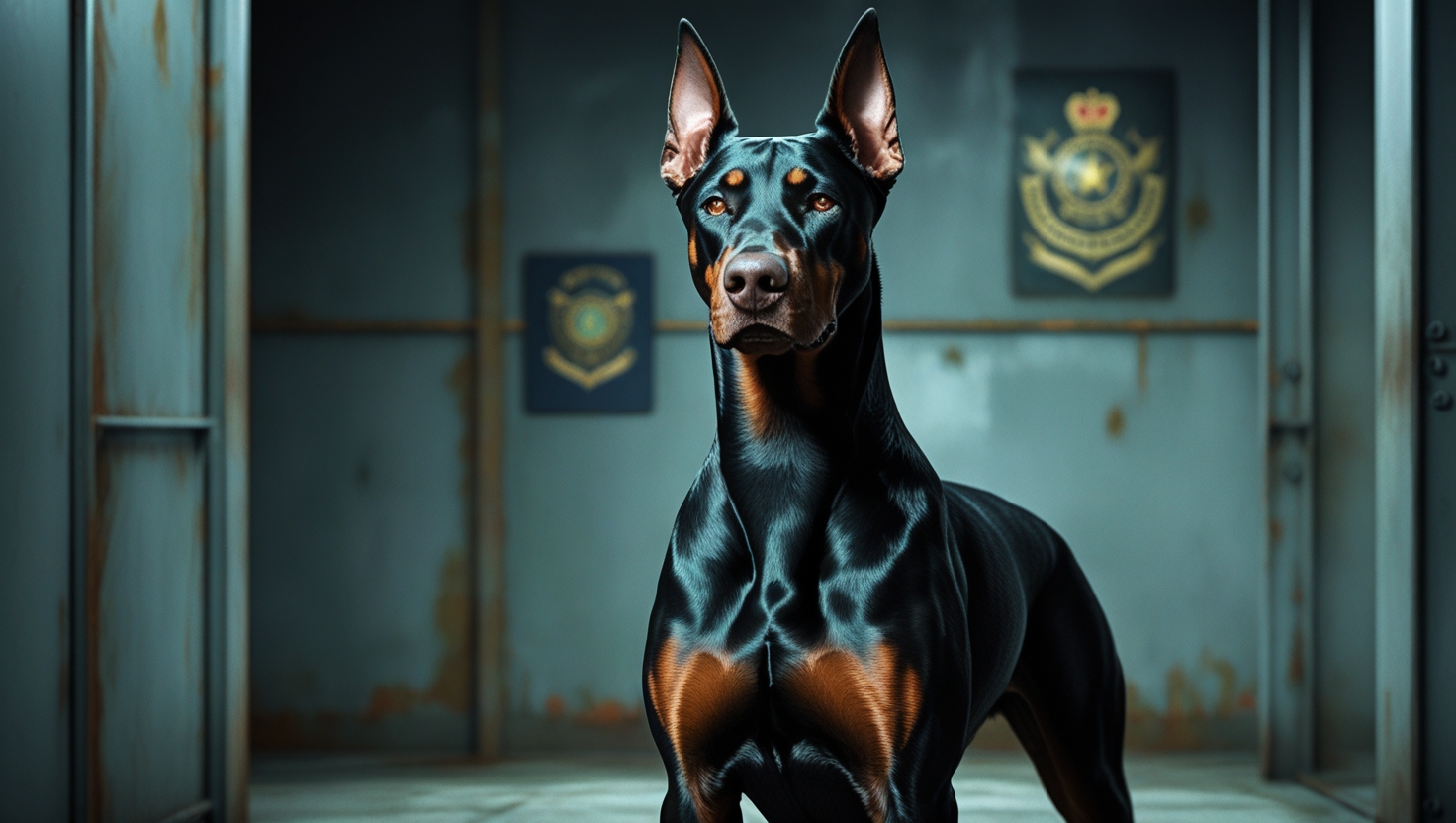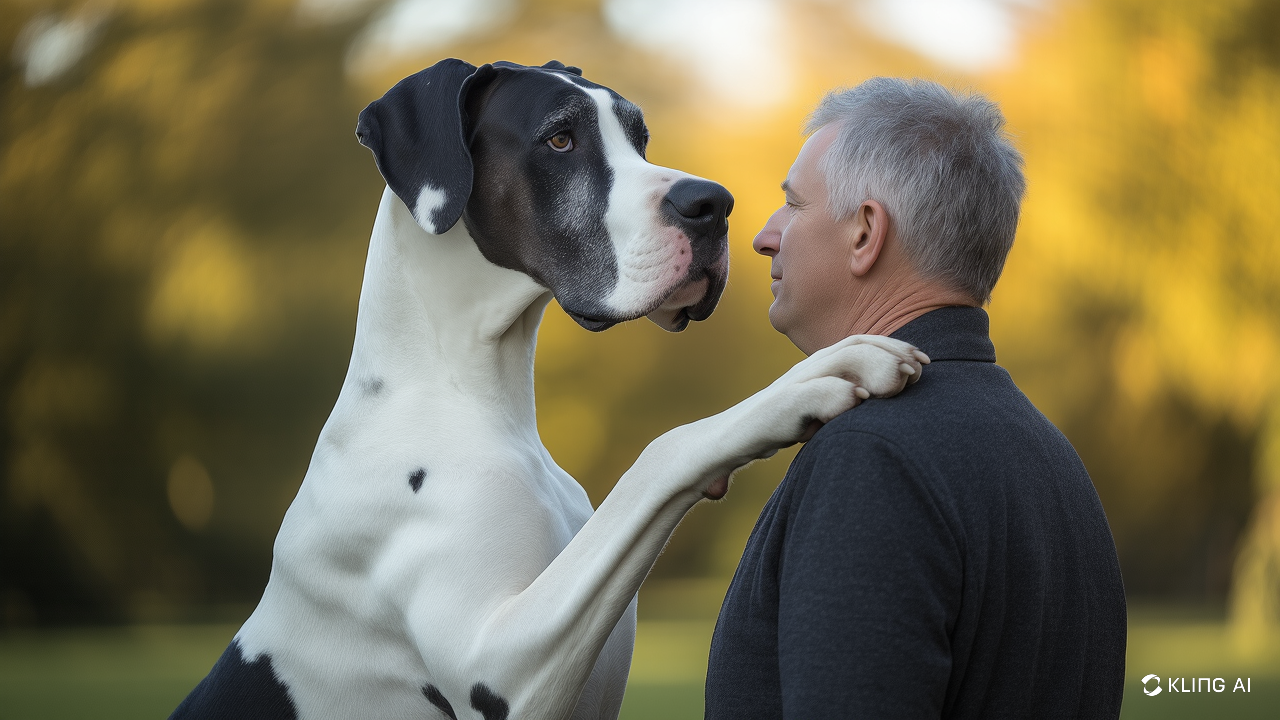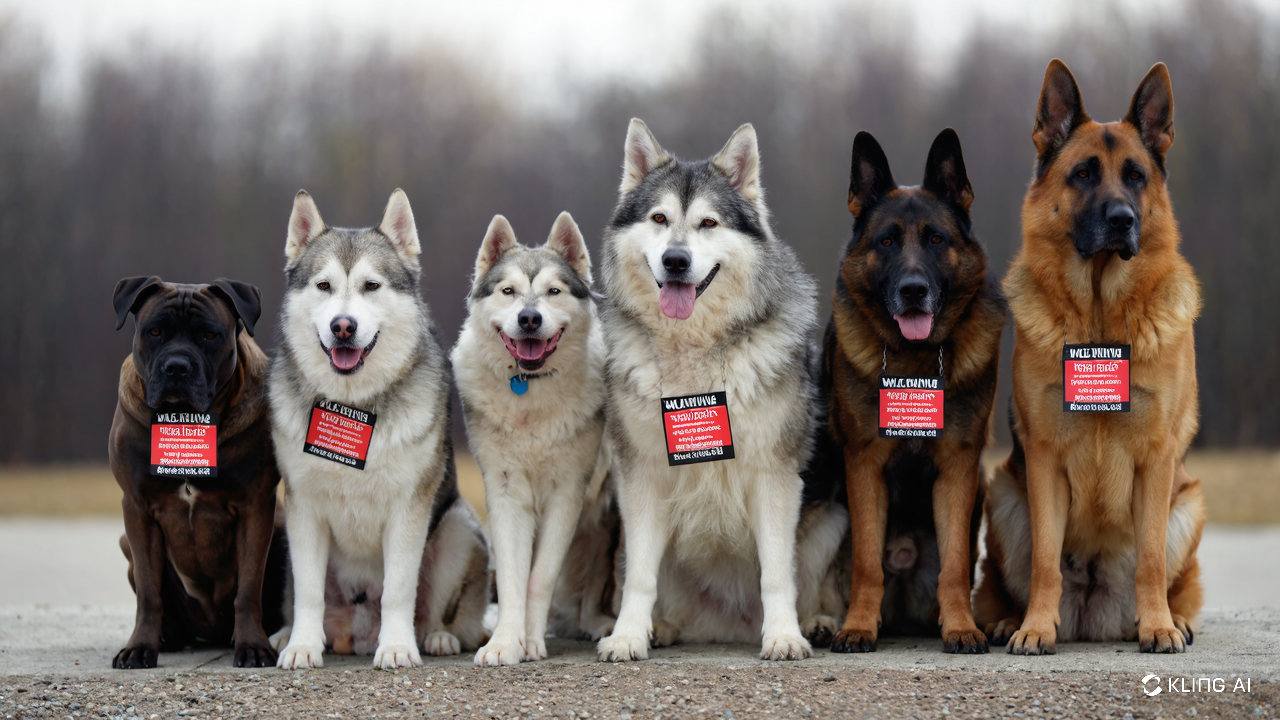
In today's world, personal security has become an increasingly important consideration for many households. While technological security systems offer one layer of protection, a well-trained protection dog provides something no camera or alarm system can: an intelligent, loyal guardian with natural protective instincts. Protection dogs serve as both deterrents to potential threats and active defenders should a dangerous situation arise. Beyond their protective capabilities, these remarkable animals integrate into our families, forming bonds that make them not just security assets, but beloved companions.
Not all dogs are suitable for protection work. The ideal protection dog possesses a specific combination of physical and temperamental traits. Physically, they must have the size, strength, and endurance to effectively deter or confront threats. Temperamentally, they require the intelligence to assess situations, the courage to face danger, and the discernment to distinguish between genuine threats and normal situations. Additionally, they must be trainable and capable of maintaining self-control even in high-stress scenarios.
Understanding the distinctions between these categories helps in selecting the right breed for your specific needs:
Protection dogs represent the highest level of canine security, requiring extensive training to respond appropriately to commands in various scenarios while maintaining perfect control.
A protection dog must be highly intelligent and receptive to training. This intelligence allows them to learn complex commands, make independent decisions when necessary, and maintain control in chaotic situations. Breeds with high working intelligence can distinguish between routine visitors and potential threats, reducing false alarms while remaining vigilant when genuine dangers present themselves.
The foundation of effective protection work lies in the unshakeable bond between dog and owner. This loyalty ensures that the dog will put itself at risk to defend its family when needed. Protection breeds naturally form strong attachments to their handlers, which strengthens their desire to protect. This bond also facilitates training, as the dog's desire to please its owner helps reinforce protective behaviors.
Some breeds possess innate protective instincts that require channeling and refinement, while others must be trained more extensively to develop protective behaviors. The best protection dogs typically have natural protective instincts that are then enhanced through professional training. This combination creates a reliable guardian that doesn't require constant commands to fulfill its protective role.
Effective protection dogs must possess the physical attributes necessary to deter or neutralize threats. This typically includes substantial size (usually 50-100+ pounds), muscular build, endurance, and agility. While intimidating appearance alone offers deterrent value, the dog must also have the actual physical capability to back up this impression if confronted with a genuine threat.
German Shepherds have earned their reputation as the gold standard for protection work. Their selection by police and military organizations worldwide isn't coincidental—it's based on their exceptional combination of intelligence, trainability, courage, and physical capabilities. German Shepherds possess the rare ability to transition seamlessly between high-intensity protection work and gentle family companionship, making them versatile guardians.
Consistently ranked among the most intelligent dog breeds, German Shepherds can learn complex command sequences and retain their training exceptionally well. Their problem-solving abilities allow them to assess situations and respond appropriately, even without explicit commands. This intelligence, combined with their natural desire to work with humans, makes them highly responsive to protection training.
Perhaps the German Shepherd's most valuable trait is its ability to maintain perfect control despite high drive and protective instincts. A well-trained German Shepherd demonstrates what trainers call "controlled aggression"—the ability to engage threats when commanded but stand down immediately when ordered. This balance creates a protection dog that is both effective in dangerous situations and safe in everyday life.
Rottweilers possess some of the strongest natural protective instincts of any breed. Historically used as cattle drovers and guardians of money wagons, today's Rottweilers retain their ancestral drive to protect their territory and family. This inherent protectiveness means that even without extensive training, a Rottweiler will naturally be suspicious of strangers and alert to potential threats.
With one of the strongest bite forces of any domestic dog (estimated at 328 pounds of pressure), substantial muscle mass, and an imposing appearance, Rottweilers present a formidable deterrent to would-be intruders. Their thick build and strength allow them to physically control threats when necessary, making them effective not just as visual deterrents but as active defenders.
The Rottweiler's natural protective tendencies require proper socialization from puppyhood to ensure they can distinguish between normal situations and genuine threats. Without adequate socialization, their protective instincts may manifest as indiscriminate aggression. A well-socialized Rottweiler, however, remains calm and composed in everyday situations while maintaining the readiness to respond to actual threats.
Originally bred as personal protection dogs, Dobermans combine lightning-fast reflexes with remarkable intelligence and striking appearance. Their sleek bodies allow for speeds up to 32 mph and quick direction changes that few other protection breeds can match. This agility enables Dobermans to rapidly respond to threats over various terrains and in confined spaces.
Dobermans excel particularly in personal protection scenarios because of their uncanny ability to stay in tune with their owners' emotions and responses. They can detect subtle changes in their environment and in their owner's behavior that might indicate threat or discomfort. Additionally, their intimidating appearance provides a strong visual deterrent, often preventing confrontations before they begin.
Dobermans require consistent training to channel their intelligence and energy appropriately. They respond exceptionally well to clear boundaries and regular mental stimulation. Without proper training, their intelligence can lead to independent decision-making that may not align with owner expectations. However, a well-trained Doberman demonstrates remarkable discipline and reliable protective responses.
The Belgian Malinois has rapidly become the preferred choice for elite military and police units worldwide, including the U.S. Navy SEALs. Their exceptional combination of intelligence, drive, agility, and relatively lighter build (compared to German Shepherds) makes them ideal for deployment in various challenging environments. Their acute senses and relentless work ethic enable them to excel in detection, apprehension, and protection scenarios.
Malinois possess extraordinary energy levels that require extensive daily physical and mental exercise. This same energy makes them tireless protectors, capable of sustained activity when needed. Potential owners must understand that this breed requires a minimum of 1-2 hours of intensive exercise daily, plus additional mental stimulation, to remain balanced and prevent destructive behaviors.
The Belgian Malinois represents both the pinnacle of protection capability and the ultimate responsibility in ownership. Their intelligence demands consistent, engaging training, while their drive requires appropriate outlets. Without proper handling, a Malinois can become overwhelming for unprepared owners. However, for those willing to invest the necessary time and resources, they offer unparalleled protection capabilities.
Unlike many protection breeds that alert through barking, Bullmastiffs were specifically developed to silently approach and physically restrain poachers. Today's Bullmastiffs retain this tendency toward quiet vigilance, making them excellent choices for urban environments where noise complaints could be an issue. They typically observe and assess situations before acting, rather than raising immediate alarms.
Weighing between 100-130 pounds and possessing exceptional strength, Bullmastiffs can physically control adult intruders through sheer mass and power. Historically, they were trained to pin down rather than bite intruders—a trait that continues to influence their protective style. This "controlled takedown" approach can be valuable in situations where the goal is to restrain rather than injure a threat.
Bullmastiffs combine their protective capabilities with a gentle, patient temperament toward family members, particularly children. Their relatively lower energy levels (compared to breeds like the Malinois or German Shepherd) make them more manageable in family settings, while their natural suspicion of strangers ensures they remain effective guardians. Their imposing appearance alone often provides sufficient deterrent value.
Dating back to ancient Roman times, the Cane Corso was developed as a property guardian and hunter of large game. Modern Cane Corsos retain their ancestors' fearlessness and territorial protective instinct. They naturally establish and defend boundaries, making them exceptional property guardians who instinctively patrol and monitor their surroundings.
Despite their natural protective tendencies, Cane Corsos require structured training and extensive socialization from an early age. Their strong-willed nature and independent thinking demand consistent leadership from their owners. When properly trained, they display remarkable discernment—remaining composed around welcomed guests while presenting an intimidating deterrent to potential threats.
The Cane Corso forms exceptionally strong bonds with family members, demonstrating surprising gentleness given their imposing size and appearance. This combination of family devotion and natural protective instinct creates a dog that seamlessly transitions between loving companion and formidable defender as circumstances require, without needing explicit commands to shift between these roles.
Standing 23-28 inches at the shoulder and weighing 55-85 pounds, Giant Schnauzers possess both the physical presence and mental acuity required for protection work. Originally bred as livestock guardians and later used by the German military and police, they combine high intelligence with natural suspicion toward strangers. Their somewhat lesser-known status as protection dogs can provide an element of surprise against threats.
Unlike some protection breeds with minimal grooming needs, Giant Schnauzers require regular professional grooming to maintain their distinctive coat. This higher maintenance requirement represents an additional commitment beyond the normal responsibilities of protection dog ownership. However, their non-shedding coat makes them suitable for owners with mild allergies.
Giant Schnauzers naturally maintain a distinct boundary between family and outsiders. They form intense bonds with their owners while remaining aloof and watchful with strangers. This natural discrimination between "safe" and "unknown" individuals makes them effective at identifying potential threats without requiring extensive training to develop this discernment.
The Akita's ancient Japanese heritage as a noble guardian and hunter has produced a breed with natural suspicion toward strangers and fierce loyalty to family. Akitas possess an independent nature combined with territorial instincts that make them naturally effective guardians even without extensive protection training. Their quiet vigilance allows them to monitor situations without revealing their protective intent.
Due to their independent thinking and natural dominance tendencies, Akitas require owners who can provide clear, consistent leadership. Without proper handling, their protective instincts can manifest as inappropriate aggression or territorial behavior. Their strong-willed nature makes them challenging for first-time dog owners but rewarding for those with the experience to channel their natural protective traits.
The key to developing an Akita's protection potential lies in reinforcing their natural discernment rather than building aggression. Training should focus on obedience, socialization, and controlled protective responses. Unlike some breeds that require training to build protective behaviors, Akitas need training primarily to establish boundaries and control for their inherent protective tendencies.
Despite their playful demeanor, Boxers possess a serious protective side that emerges when their family faces potential threats. Originally developed in Germany as hunting and guard dogs, modern Boxers retain their ancestors' courage and protective instincts. Their alert nature makes them excellent early warning systems, while their athletic build allows them to respond physically if needed.
With remarkable speed, agility, and stamina, Boxers can respond quickly to threatening situations. Their muscular build and powerful jaws provide the physical capability to back up their protective instincts. This combination of athleticism and strength enables them to transition instantly from playful companion to serious protector when circumstances demand.
While Boxers naturally possess protective tendencies, their effectiveness as protection dogs depends on channeling their exuberant energy and sometimes clownish behavior into disciplined responses. Training should focus on reliable obedience and appropriate discrimination between normal and threatening situations. A well-trained Boxer demonstrates an ideal balance of friendly family companion and vigilant guardian.
Proper socialization forms the foundation of a reliable protection dog. Exposure to various people, environments, and situations during puppyhood teaches the dog to distinguish between normal interactions and genuine threats. Without this crucial socialization, protection dogs may develop indiscriminate aggression or fear-based responses. Socialization should be ongoing throughout the dog's life.
Protection dogs require impeccable obedience training before specialized protection work begins. Essential commands include reliable recall, controlled positions (sit, down, stay), and release commands that the dog will obey even under high stress. Once basic obedience is established, specialized protection commands can be introduced, including alert, guard, and controlled defensive behaviors.
While basic obedience can be owner-taught, professional assistance is strongly recommended for protection training. Professional trainers bring expertise in developing controlled protective responses without creating dangerous aggression. They can assess the individual dog's temperament and design training approaches that work with the dog's natural tendencies while ensuring reliable control in all situations.
Ownership of protection breeds may carry additional legal responsibilities, including breed-specific legislation in some jurisdictions and increased liability risks. Homeowners insurance policies may exclude certain breeds or require additional coverage. Potential owners must research local regulations and understand that they may be held legally responsible for their dog's actions, even in protective situations.
Ethical protection dog ownership requires commitment to maintaining control at all times. This includes proper containment, supervision, and ongoing training to prevent inappropriate aggressive responses. Protection dogs should never be encouraged to display aggression in normal situations, and owners must accept the responsibility of managing a dog with enhanced protective capabilities.
Protection dogs must be reliably controlled in public settings through proper leash handling, secure containment during transport, and appropriate management around strangers. Even the best-trained protection dogs should never be allowed off-leash in unsecured public areas. Responsible owners recognize that their dog's protective capabilities require a higher standard of management and control.
Selecting the ideal protection breed requires honest assessment of your living situation, experience level, and security needs. Consider factors such as:
Owning a protection dog represents a significant responsibility that extends beyond basic pet ownership. These dogs require lifetime commitments to training, socialization, proper containment, and responsible management. Potential owners must be prepared for the financial, time, and emotional investments required to maintain a well-balanced protection dog throughout its life.
The ultimate goal in protection dog ownership is achieving balance—a dog that provides security while remaining a loving family companion. With proper selection, training, and management, protection breeds offer unparalleled security benefits while forming deep bonds with their families. Though the commitment is substantial, many owners find that the combination of protection and companionship these remarkable dogs provide is well worth the investment.

Discover the most dangerous dog breeds and what makes them potentially aggressive. Learn about key factors like genetics, training, and environment, and how responsible ownership can prevent attacks. Find out which breeds are most commonly labeled as dangerous!
Read more...

Discover the biggest dog breeds in the world, from towering Great Danes to massive English Mastiffs. Learn about their size, temperament, care needs, and what it takes to own a giant dog. Find the perfect large breed for your lifestyle!
Read more...

Discover which dog breeds are illegal in the USA and why certain breeds face bans or restrictions. Learn about breed-specific legislation (BSL), controversial dog laws, and the debate over public safety vs. responsible ownership.
Read more...
Do you need a website design similar to this one, or maybe have your own idea in mind?
Feel free to use the Email below to get a free quote TODAY!
digigrow.to@gmail.com
All rights reserved 2024 - 2025.
Designed by DigiGrow